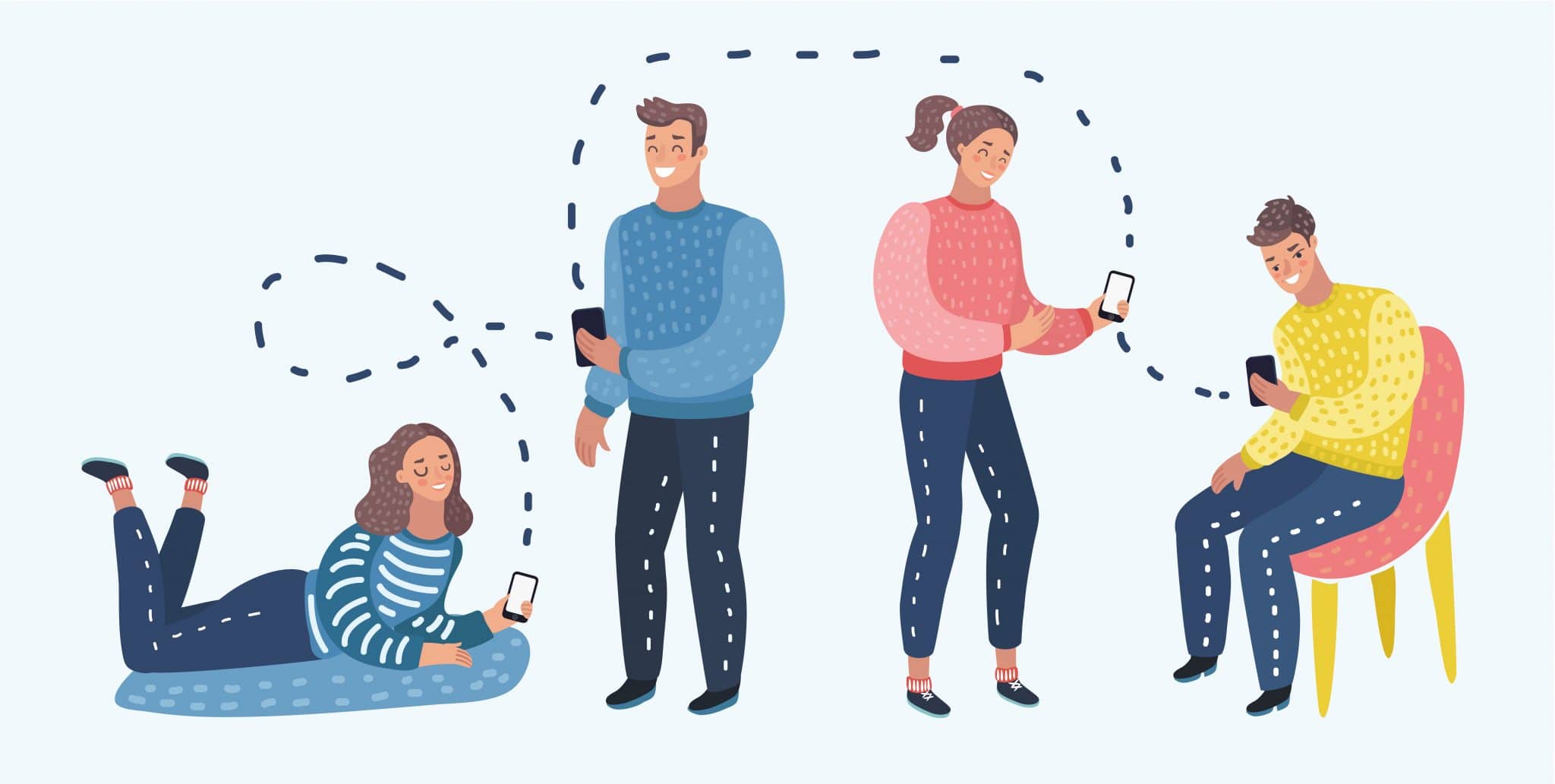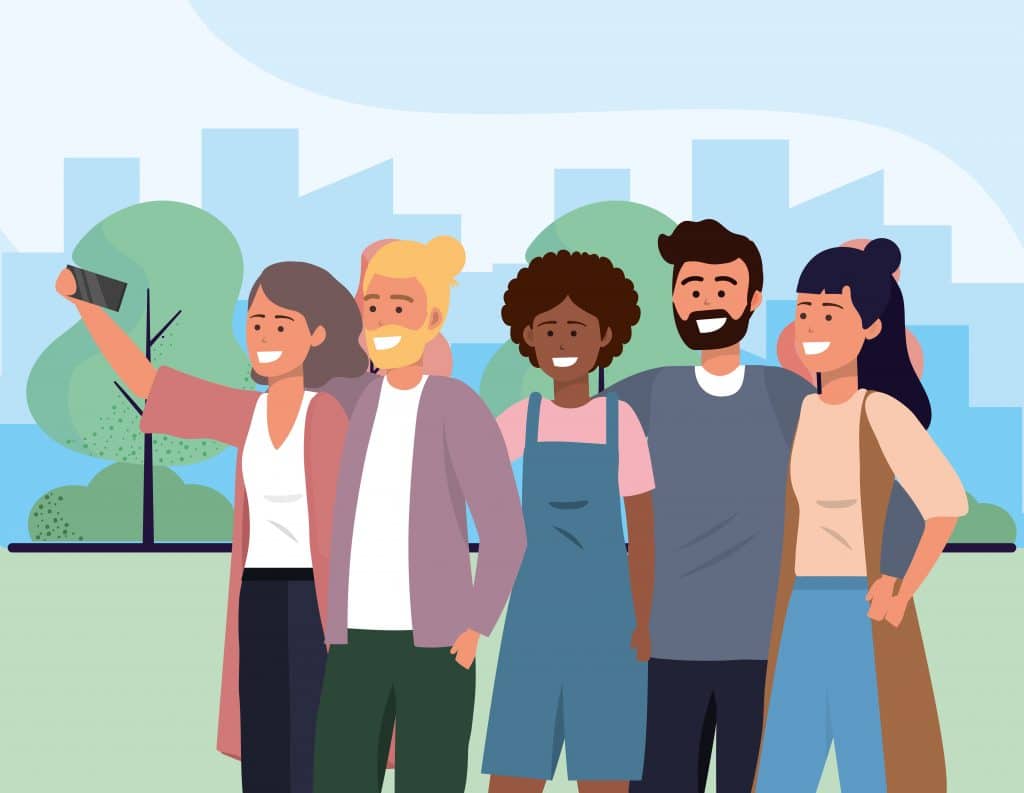Companies have for long regarded phone conversations as the best way to provide customer service, address difficulties and concerns, or advertise new goods and services.
However, according to studies, millennials and Generation Z despise receiving phone calls. If they’re expected to pick up the phone, they’ll consider the company out-of-date and inconvenient.
Studies have further shown that using a conventional CRM approach to sell to millennials and Generation Z is ineffective. So if you insist on maintaining an out-of-date system, you risk them seeing your products and services as obsolete.
Since Millennials and Gen-Z are the next generations of consumers, it’s high time that businesses adapt to the present-day market. Otherwise, they perish.
A good example is Blockbuster, which sealed their fate by sticking with an outdated business model and refusing to see the opportunity that Netflix once presented to them. While Netflix has grown in popularity, earning over $6 billion in revenue for the second quarter of 2020, Blockbuster now only has one location in Bend, Oregon.
So how can businesses adjust to new customer service trends like this, especially in light of changing consumer expectations? It’s possible through the modern messaging systems that are in tune with today’s trends.
Why millennials and Gen-Z are turning away from phone calls

Millennials (those born between 1981 and 1996) and Generation Z (those born between 1996 and 2015) find phone conversations to be “too time-consuming. According to BankMyCell’s survey, 75% of today’s generation cite this as the most common reason they avoid calls.
Millennials and Gen-Z are less enthusiastic about the “small talk” associated with phone conversations like pleasantries and greetings. Instead, they prefer communication that is both rapid and direct, with simple outcomes. They believe that a brief text would have the same impact in presumably less time.
In a business deal, the phone approach can irritate and confuse them. The chances are that they will end up Googling your competition as a better alternative at the end of the conversation.
In addition to being excessively time-consuming, calls are also deemed unkind and anxiety-inducing by millennials and Gen-Z. When talking to someone on the phone, nearly 89% of respondents claim they are often nervous. That’s why many, if not all, have to overcome their fears before even using the Call button.
The reason is that calls are spontaneous. However, a person can plan out their thoughts and assemble their ideas before composing a text or an email. And based on a recent poll, members of Generation Z are less eager than their millennial counterparts to be “always available” via phone call.
In fact, today’s youths think it is inconsiderate to call without texting or emailing first. They tend to see such callers as inconveniencing them and interrupting their routine. So when your customers realize they must wait five to ten minutes for what they want, they are likely to respond unfavorably.
Simply put: “Millennials already understand the advantages of digital communication better than some of us. They want results, not a drawn-out discussion,” says Inc. Magazine’s John Brandon.
Communicating with the modern generation: The better way

Customer service has changed significantly in recent years. To be heard, you need to reach out to the modern generation of consumers using their preferred means.
According to research performed by the Center for Generational Kinetics, millennials prefer using text messaging applications to communicate. This is followed by email, with subject lines taking priority and social media (e.g, Instagram, TikTok, Twitter).
A recent poll also supports this statement, showing that 77 percent of people use their phone’s native messaging applications. Although social media platforms have provided a tempting opportunity for businesses to reach out directly to their customers, email has retained its top spot as the most popular marketing.
Meanwhile, healthcare services and facilities (which are historically slow to change) are now using text as their primary mode of contact with patients since it began! What does this then tell us about businesses that continue to rely on middlemen and phone calls?
Although social media went down a slightly different path, social media platforms like Instagram, Twitter, and Snapchat still deliver a “consumerized experience.” The goal-oriented approach is made up of three activities: capture, describe/comment, and share. And it does, just as you would expect.
According to a recent study, internet celebrities and other famous individuals on social media significantly influence the lifestyle and purchase decisions of millennial and Gen-Z consumers. The goal is to provide modern messaging systems to young people, one where they don’t have to call customer service centers for what they want.
If you do not provide a comparable experience to that offered by social media and other current apps, you will be the last person they turn to. Eventually, they’ll discover a superior service or product than yours, and you’ll be obsolete.
To prevent your boat from sinking and your consumers from abandoning the ship, you must continue to improve the experience you offer. Start by using modern messaging platforms for your deskless staff and break away from the monotony of a traditional call center.
Keeping in touch with the changing business environment
Quote: “The current and future consumers are Millennials and Gen-Z. So if businesses want to survive in the years ahead, they must change their methods.”
The mentality of today’s millennials and Gen-Zs has drawn a lot of corporations, such as Uber, Airbnb, and Doordash, to profit by tapping into their mindset. These companies cut out the need for middlemen by connecting demand directly with supply through their apps. As a result, there is no need for a third party in the shared economy model that now shapes the contemporary consumer experience.
Now, a customer can simply open their app and press a button to complete an action.
Also, this model provides complete openness and visibility for consumers. For example, users can now track the Uber vehicle on their device via GPS and can even inform the driver immediately of any changes.
Overall, businesses can use modern messaging platforms and technologies like Uber and others to:
- Empower customers to talk directly with field employees without having to go through a desk-based person (CRM)
- Create transparency and quick access to information for both consumers and deskless workers.
Lastly, using modern communications technologies to provide services boosts consumer and employee trust and loyalty. It also aids in the reduction of employee turnover and tension, allowing for a smooth workflow and high job fulfillment.

